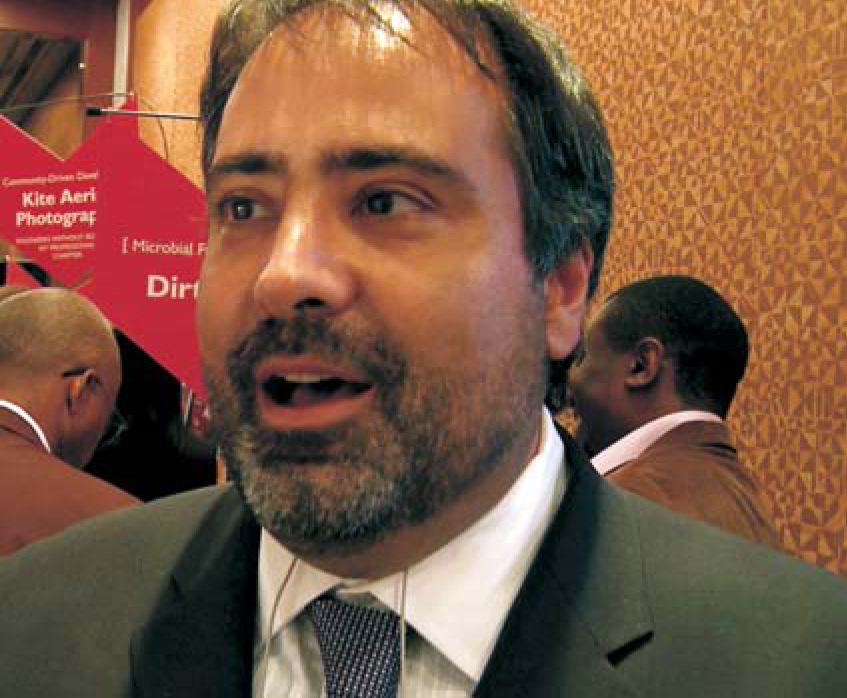At work in the trenches of science diplomacy
DOI: 10.1063/1.3529399
Alex Dehgan was appointed science and technology adviser at the US Agency for International Development in March as part of USAID administrator Rajiv Shah’s pledge to rebuild the agency’s S&T capacity. Another step in that rebuilding will be the hiring of more scientists and engineers at USAID, which will distribute about $21 billion of assistance to developing nations this fiscal year. And in October, Shah unveiled a “development innovation ventures” fund at USAID to support commercialization of new high-risk technologies that could have big payoffs for the developing world.
Dehgan, a PhD biologist and lawyer, helped set up a “virtual science library” in Iraq (see Physics Today, November 2005, page 24
PT: What fraction of the world’s development needs can be met in whole or in part through S&T?
DEHGAN: There are studies that have shown that 80% of economic growth and the development of countries is actually due to advances and investments in science, technology, innovation, and the application of market capital to commercializing science and technology development. For diplomacy, many of the challenges for our foreign service officers around the world are going to be found in science and technology. There are going to be issues, like depletion of fisheries, global climate change, and how we manage energy, that are going to require a diplomatic corps that is much savvier about science and technology.
PT: What were the S&T roots of USAID? And what happened to them?
DEHGAN: USAID was founded and announced in the same speech as the Peace Corps [by President John F. Kennedy in 1961]. For a long time, people with Peace Corps field backgrounds came into USAID to continue their work. For various reasons, USAID went through a crisis, and we lost the ability to do project design, and we lost the ability to really understand whether we were having an impact on these countries. To bring back project design and be true partners of countries in addressing their fundamental problems means reconnecting with institutions of higher education and reconnecting with people who have not worked in development but have a lot of ideas and approaches that we should try. We need to bring in technical expertise to work alongside the traditional development contractors, to address problems, and, more fundamentally, to share that knowledge and transfer that technology to those countries so they’ve got the ability to solve their own problems.
USAID is now trying to rebuild, and we’re back to around 9000 people. At one point this agency had 47-plus AAAS fellows, the most of any federal executive agency. But in 2006 and 2007, we almost lost the fellowship program. We are back up to 23 fellows, and we hope to double that number next year. We want to send fellows overseas. We have started buying into a State Department program called Jefferson Science Fellows, which involves tenured professors. We really want to be able to replicate State’s embassy science fellows program, which sends people from the technical agencies [those employing large numbers of scientists, such as the Departments of Energy and Agriculture, NSF, and the National Institutes of Health].
We want to staff AID with more people from [academia and nonprofit institutions]. We want to bring back former USAID staff and give them incentives to maintain and enhance their skills and provide a reward system that allows these guys to advance their careers without having to just become managers.
PT: One often hears that scientific relations can overcome otherwise hostile relationships between nations.
DEHGAN: In Iran, 60% of [President Mahmoud] Ahmadinejad’s cabinet are scientists, and his foreign policy adviser is a database expert who continues to publish in US peer-reviewed publications. When I was at State, I looked at the role of science in addressing, for instance, the problem of drug trade and drug addiction that is killing many Iranians. They have this huge youth bulge and high unemployment rates, and you have people who are at a very young age addicted to opium. That is one area where scientific cooperation between the United States and Iran was particularly robust. Iranians are very concerned about water; there are places that are almost entirely dependent on transboundary sources of water. There is a potential for water conflict that you can address through increasing the efficiency of irrigation. Despite the international sanctions, Iran has made great progress in fields like nanotechnology and stem cells. Iranian scientists publish more papers with Americans than with any other country in the world.

Dehgan
USAID

More about the Authors
David Kramer. dkramer@aip.org




